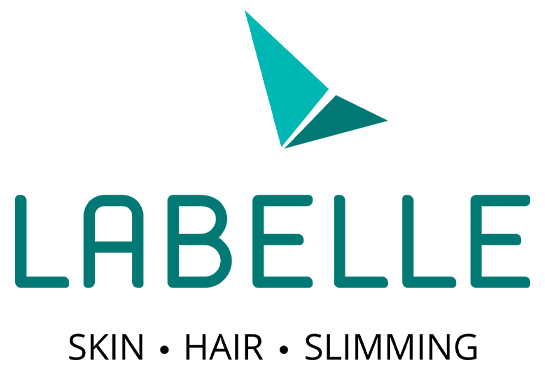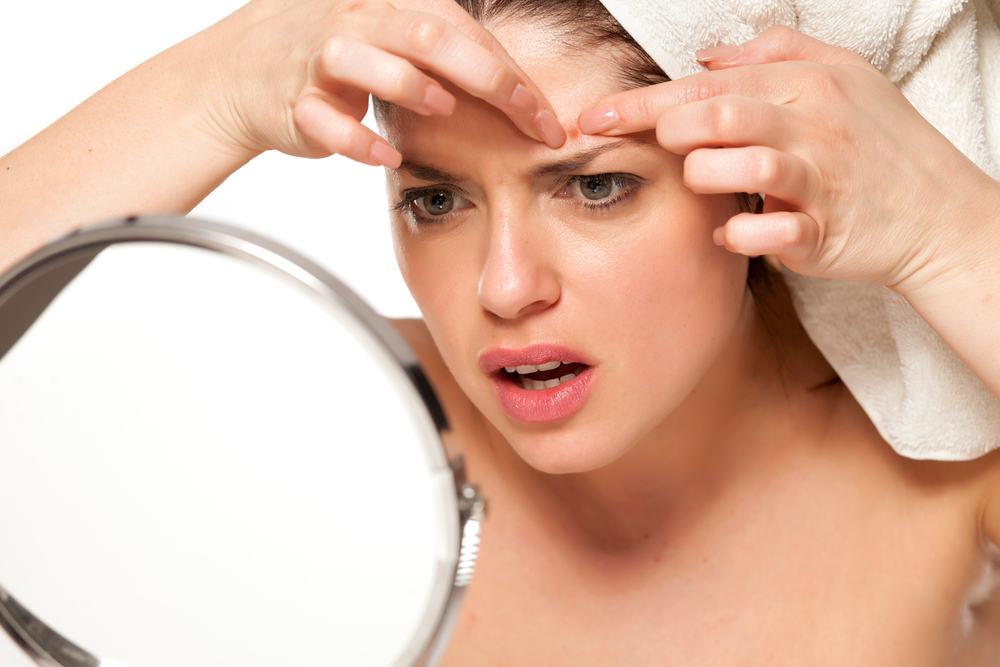How To Get Rid Of Forehead Pimples?
Concerned about forehead pimples? Dealing with forehead acne can really be a pain. It’s a challenging condition to manage, affecting both teenagers and adults and often leaving behind lasting scars. These blemishes, often characterised by redness and inflammation, can disrupt our confidence and daily routines.
If you frequently experience acne breakouts, you likely have oily skin. Managing your skin’s sebum production is essential for treating acne and achieving clear, blemish-free skin.
Worry no more on how to get rid of forehead pimples, as Labelle’s pimple treatment and routines are tailored to your skin’s unique needs. Labelle provides cutting-edge skincare solutions for both treating and preventing forehead acne.
What Are Forehead Pimples?
Forehead acne typically appears as red papules or tiny bumps, sometimes with a noticeable accumulation of pus at the top, known as pustules.
These acne can appear as red bumps, whiteheads, blackheads, or pustules, and are typically caused by excess oil production, bacteria, clogged pores, hormonal changes, or other factors.
Forehead acne and pimples often occur when the sebaceous glands beneath the skin become clogged, leading to the accumulation of oil, dead skin cells, and bacteria
Forehead pimples can be bothersome and affect one’s appearance and self-confidence.
Reasons For Pimples On Forehead
Read to understand what can be the reason for pimples on the forehead:
• Excess Oil Production: The forehead, like the rest of the face, has oil glands that can produce excess sebum. When this oil combines with dead skin cells, it can clog pores and lead to acne.
• Hair Products: Certain hair products, such as styling gels, pomades, or oils, can migrate to the forehead and contribute to pore blockages, causing pimples.
• Poor Skincare Habits: Inconsistent or improper skincare routines may fail to adequately cleanse the skin, allowing the accumulation of dirt, oil, and bacteria on the forehead. Leaving makeup on overnight can lead to acne.
• Hormonal Fluctuations: Hormonal changes, especially during puberty, menstruation, or pregnancy, can lead to increased oil production and subsequent acne on the forehead.
• Dietary Factors: Certain foods with high glycemic index or dairy products may trigger acne breakouts, including those on the forehead. High glycemic index food includes sugar and sugary foods, sugary soft drinks, white bread, potatoes, white rice, etc.
• Friction and Pressure: Wearing hats, headbands, or consistently touching the forehead can create friction and pressure, leading to irritation and acne formation.
• Over-Exfoliation: While cleansing is crucial, excessive scrubbing can lead to skin irritation and strip away natural oils and barriers
• Stress: Elevated stress levels can influence hormone production, potentially aggravating forehead acne.
• Genetics: A genetic inclination to acne can be passed down through families, making individuals with hereditary acne history more susceptible to developing pimples on the forehead.
Infections that Cause Forehead Acne
• Boils
Boils occur when Staphylococcal bacteria penetrate the body through skin abrasions, cuts, or infected hair follicles, leading to their formation. Initially, they appear as skin infections within hair follicles or oil glands, progressing into tender lumps. Over time, these lumps evolve into painful boils beneath the skin, filled with pus.
• Ringworm
Ringworm typically begins as a rash characterised by small red pimples. Over time, these pimples gradually expand and merge, forming a circular or oval-shaped ring ranging from ½ to 1 inch in diameter. The edges of the ring often appear red, elevated, or scaly. Within the ring, the skin may exhibit a pinkish hue or appear nearly normal in color.
• Rosacea
Rosacea is a prevalent inflammatory skin condition characterised by facial redness, which may extend to other areas of the body, such as the eyes. Various forms of this condition can lead to the development of pimples and swelling on the skin.
• Contact Dermatitis
Contact dermatitis appears as an itchy, swollen rash triggered by your skin’s fast response to an allergen or irritant present in your surroundings.
• Bacterial Infections
Propionibacterium acnes, a type of bacteria commonly found on the skin, can multiply rapidly in clogged pores, leading to inflammation and acne formation.
• Fungal Infections
Malassezia, a yeast-like fungus, may exacerbate acne by triggering inflammation and follicular plugging.
• Viral Infections
While less common, viral infections can potentially worsen acne symptoms, particularly in individuals with compromised immune systems.
These infections may interfere with the skin’s natural defenses against acne-causing bacteria and inflammation, potentially leading to more severe and persistent acne outbreaks on the forehead and other facial areas.
Understanding the role of infections in forehead acne is crucial for developing effective treatment strategies tailored to individual needs and circumstances.
Forehead Acne Treatments
The most effective acne treatment depends on the type, and severity of the acne, as well as skin type and medical history. Book your consultation with Labelle’s dermatologist to determine the best course of action to get rid of forehead pimples.
Chemical Peel Treatment
Superficial peels are beneficial for addressing mild acne, enhancing skin texture, and improving tone. Medium peels, on the other hand, are more effective in treating moderate to severe acne scars, wrinkles, and hyperpigmentation.
Following your initial consultation, Labelle will determine the most suitable peel for addressing your acne on forehead treatment. In the weeks preceding your first chemical peel, you might receive a prescription for topical medication to prime your skin. This prescription may include a blend of hydroquinone, tretinoin, and lower-concentration alpha-hydroxy acids.
These peels, enriched with plant-based extracts, work to exfoliate your skin, removing impurities such as dirt, dead cells, and excess sebum accumulated in your pores, ultimately revealing clearer skin.
Laser and Light Therapy
Various light based treatments can target acne-causing bacteria or reduce oil production.
The effectiveness of light-based treatments for forehead acne lies in blue and blue-red light therapy, particularly notable for its significant impact on mild to moderate inflammatory acne lesions.
Corticosteroid Injections
A cortisone shot is a synthetic hormone through injection. It’s administered to provide temporary relief from inflammation and to reduce the size of large cysts. These injections can be applied to both facial and bodily areas affected by such conditions.
Retinoids
Labelle’s dermatologist will prescribe a retinoid that might offer relief if you’re experiencing moderate to severe acne that hasn’t responded to previous treatments.
Applied topically, retinoids work to clear pores, facilitating the effectiveness of other medicated creams and gels. Additionally, they help diminish acne flare-ups by preventing the accumulation of dead cells that can block pores.
Oral Contraceptives
Hormonal medications, such as oral contraceptives, can aid in regulating hormones and effectively getting rid of forehead pimples. Certain oral contraceptives possess anti-androgen properties. Because androgens play a role in skin oil production, these contraceptive pills can regulate this process.
Various types of oral contraceptives are accessible, with the most suitable for acne being the combination pill, comprising estrogen and progesterone hormones.
The optimal effectiveness of the birth control pill is achieved by taking it consistently at the same time daily and as prescribed. In some cases, combining the birth control pill with other medications enhances its effectiveness.
Antibiotics
In cases of severe forehead acne, Labelle’s dermatologists may prescribe antibiotics like erythromycin or minocycline.
To enhance the effectiveness of pimples on forehead treatment, a topical cream like vitamin A or retinoid cream is added. This is because antibiotics alone may not adequately tackle the removal of clogged sebum in pores for optimal results.
Labelle’s dermatologists prescribe FDA-approved medication for the treatment of acne.
Anti-Androgen Agent
Spironolactone, Cyproterone Acetate, and Flutamide are among the anti-androgens that aid in diminishing the visibility of acne and blemishes. They achieve this by obstructing androgen hormone receptors in the body, consequently slowing down the excess oil production by the sebaceous glands.
An excess of androgen can worsen acne concerns by disturbing the hair follicles responsible for regulating skin cells and by boosting oil production.
Benefits of Forehead Acne Treatment
• Treating forehead acne can alleviate physical discomfort such as pain, itching, and tenderness associated with active acne lesions.
• Addressing acne can significantly enhance self-confidence and mental well-being, particularly in individuals who experience embarrassment or distress due to their skin condition.
• By reducing acne lesions and associated redness, treatment can promote a smoother, more even complexion, allowing individuals to feel more comfortable and confident in social and professional settings.
• Effective acne treatment can prevent the development of permanent scarring and hyperpigmentation, which are common sequelae of severe or untreated acne.
• Proactive management of forehead acne can prevent the recurrence of breakouts and promote long-term skin health.
How Much Does Labelle’s Forehead Acne Treatment Cost In India?
The cost of forehead acne treatment depends upon the following factors:
• Dermatologist’s diagnosis
• The selected procedure and the frequency of sessions
• The severity of acne
• Skin condition
• Targetted area of the akin
• Location of the clinic
• The level of technology utilised
• Expertise of the dermatologists
Post-Treatment Care and How To Prevent Forehead Acne?
• Gentle care is the key! Make it a routine to cleanse your face twice daily with a mild cleanser. Opt for warm water during rinsing and give your face a gentle pat dry – no scrubbing allowed! Remember, rubbing can aggravate acne, so keep it gentle for a smoother, clearer complexion.
• Regularly washing your hair is crucial, especially if it tends to get greasy. Opt for a shampoo specifically designed to tackle oily hair. It’s a simple yet effective way to maintain a healthy balance and keep those unwanted breakouts at bay.
• Constantly touching your forehead introduces unwanted bacteria into those precious pores, making matters worse. If you absolutely must touch your forehead, make sure those hands are clean first. It’s a small but powerful step to keep your skin happy and blemish-free.
• Avoid products that might irritate, especially those with alcohol in cleansers – they can be troublemakers. Choose wisely, and let your skin breathe easy with products that are on its side.
Why Choose Labelle As Your Perfect Clinic For Forehead Pimples?
Say goodbye to those annoying forehead bumps!
Labelle’s board-certified dermatologists are on a mission to guide you through the journey to clear, flawless skin. Wondering what causes forehead acne or how to identify the type you’re dealing with? Look no further.
We’ve got the expertise to break it down for you and, most importantly, provide you with the quick cure and effective solution you need to bid farewell to forehead acne! Your clear skin journey starts here at Labelle.
Embrace the journey to a blemish-free forehead with confidence. Unleash your radiant skin potential and enjoy the glow of a clear, confident complexion.
Unlock radiant, acne-free skin and embrace newfound confidence with Labelle’s transformative solutions! Schedule a consultation soon!
FAQ’s:
What is the typical duration of forehead acne?
The duration of forehead pimples can vary widely, ranging from a few days to several weeks to several months. The timeframe largely depends on the type of acne and the effectiveness of the products used to treat it.
What are the common causes of various skin infections?
Boils, ringworm, rosacea, contact dermatitis, fungal, bacterial and viral infections.
What is the most effective acne treatment for oily skin?
Chemical peel treatment is considered to be one of the best forehead acne treatments.
Whom is chemical peel treatment not suitable for?
Chemical peels aren’t suitable for all. Factors like infections, recent medication use, scarring history, immune diseases, pregnancy, breastfeeding, and expectations matter.
How do anti-androgen agents help with acne?
Anti-androgen agents like Spironolactone, Cyproterone Acetate, and Flutamidereduce acne visibility by blocking androgen hormone receptors, thereby decreasing excess oil production from the sebaceous glands.
Do forehead acne scars disappear over time?
Acne scars occur when healthy tissue is replaced with fibrous tissue, often due to picking or squeezing spots. Healing may take time, and for some, these scars can be permanent.
Get Free Consultation
